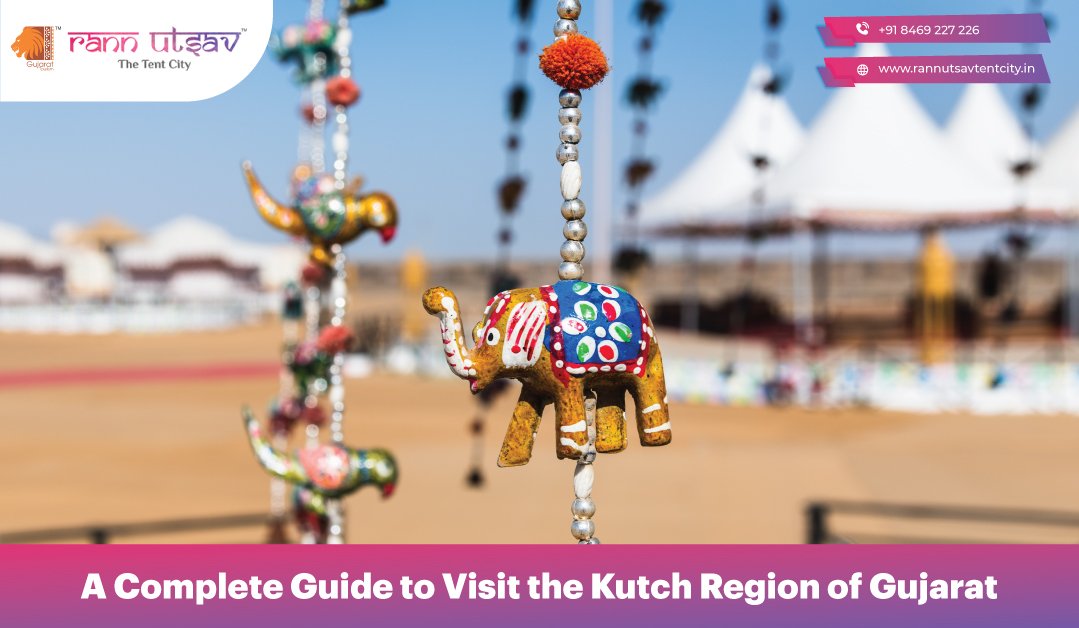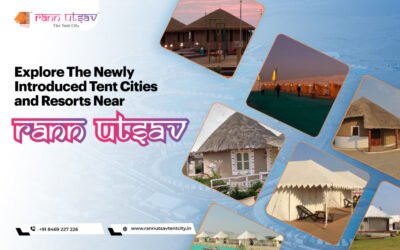With the landscape spanning more than 40,000 square kilometres, the immense desert of the Kutch is one of the largest districts of India.
It submerged during the monsoon season and got dry after the monsoon. It alternates between wetland and dry land.
The Great Rann of Kutch is famous for its salt desert and the small Rann of Kutch is famous for its Wild Ass Sanctuary.
The Great Rann of Kutch occupies a part of the Thar deserts, extended into Rajasthan. And located in the far north, it borders Pakistan.
Hence, it comprises many migrant communities from Pakistan – Sindh, the Marwar region of Rajasthan and Persia from Iran.
For hundreds of years, until India became a republic, the Kutch region was ruled by the oldest Hindu dynasties, the Jadeja Dynasty of Rajputs.
Overview
Such mixed migrants have established many different religions in the Kutch region. And remain in surprising harmony with its inhabitants and coexist peacefully. They respect each other’s beliefs and often participate in each other’s events.
One of the main attractions for tourists is that many villagers earn income from the arts passed down from generation to generation. Tourists can buy those articles and can learn the Art from them.
Yet what is striking and meaningful is the simplicity and quietness of life. Tourists feel amazing to visit the remote villages of the Kutch, learn their Art and get another perspective on life. It’s just inspiring and humbling.
Kutch is the perfect rural tourism destination. To explore the real essence of the Kutch, you should spend at least a week or more.
Bhuj
Bhuj, the capital of the Kutch, is the perfect launching point to explore the region as, is well connected with air, bus and train routes.
The City’s Royal Heritage
The city of Bhuj is known for its royal heritage. It was ruled – by the kings of the Jadeja dynasty, who established themselves there in the 16th century.
Bhuj spread out around hills called Bhujia Dungar. There was Bhujia Fort on the top of the Bhujiyo Dungar, constructed by king Rao Godaji to protect the city.
Attractions in Bhuj
By the earthquake in 2001, more parts of the Bhuj city vanished. Fortunately, architectural treasures constructed by Jadeja rulers remain standing in the walled Old City.
The famous heritage properties in Bhuj city are:
● Rani Mahal – the former royal residence
● Prag Mahal – the Italian Gothic and European styled palace with its durbar hall and clock tower
● Aina Mahal – an ornate 350 years old palace with royal paintings, furniture, textiles, weapons and great mirror work
Other attractions in Bhuj are:
● the new Swaminarayan temple – a magnificent gleaming white marble masterpiece
● museums,
● markets and bazaars, and
● Hamirsar Lake – the home of catfish
● The Living and Learning Design Center, a curated museum – get an incredible insight into the lives and artisanship of women of the Kutch.
If you are fond of handicrafts, you can meet some expert artisans in Bhuj.
Mandvi
After exploring Bhuj, the tourists usually would love to head off to nearby villages to explore handicrafts and the Great Rann of Kutch white desert.
Famous for shipbuilding, the port of Mandvi is only an hour’s drive from Bhuj. On the way, there is a historic Kera – 10th century Shiva temple to visit. It was damaged badly in the earthquake in the year 1819 in Kutch.
Though occupied by bats, tourists can still go inside. Visit the place on full moon nights when moonlight flooded from a gap in the roof.
On the west coast of Kutch, the port of Mandvi is worth visiting to see a 400 years old shipbuilding yard.
It is along the banks of the Rukmavati River that merges into the Arabian Sea. There you can witness various stages of construction of the ships.
Other Attractions in Mandvi are:
Most of the old buildings are still intact as Mandvi was not hit as badly as Bhuj by the 2001 earthquake. On the outskirts of Mandvi beach, the Vijay Vilas Palace is a must visit place.
In Koday before Mandvi, there is a peaceful white marble Jain temple. It oozes calm and serenity. It has 72 shrines housing Jain gods. The drive from Bhuj to Mandvi is full of scenic views and palm trees almost look like south India.
Kutch Villages and Handicrafts

The Kutch is well known for its handicrafts, produced by talented artisans in its villages. Arts such as bandhani tie-dye and ajrakh block printing originated in Pakistan.
Migrants from Pakistan brought these arts with them more than 350 years ago. The Khatri community specializes in both these arts.
The Kutch is also famous for other prevailing arts such as embroidery, mud & mirror work, weaving, pottery, lacquer work, leatherwork and Rogan art.
The famous Handicraft Villages in Kutch are:
● Bhujodi – a village of weavers, about 10 kilometres east of Bhuj
● Ajrakhpur – a village of block printers, 15 kilometres east of Bhuj is the most frequented village.
● Nirona – around 50 kilometres northeast of Bhuj, can be visited on the way to the Great Rann of Kutch is home to bell makers, Rogan art, and lacquer work artists.
● Khavda – on the way to the Great Rann, block printing and pottery is done in the village.
● Gandhinugam village – populated by the Meghwal community, featured colourful painted traditional mud huts. It is at Ludiya.
Other Craft Parks and Resource Centers are:
● Hiralaxmi Memorial Craft Park in Bhujodi village – is a cultural centre and artisans market sponsored by the government.
● Khamir – provides a platform for local artisans to sell their handicrafts and interact with visitors. It also facilitates guesthouses for visitors participating in workshops and events. It is in Kukma, 15 kilometres east of Bhuj, not far past Bhujodi.
Great Rann of Kutch and Salt Desert
Apart from handicrafts, people visit Kutch to see the Great Rann of Kutch. Made up of salt desert, it covers around 10,000 square kilometres and is close to the Pakistan border.
The salt is submerged underwater during the monsoon season in India, making it even more astonishing.
The magnificent white desert is inhabited by various village communities, many of whom have migrated from Pakistan and the Marwar region of western Rajasthan.
Until after the 2001 earthquake, it remained largely cut off and unexplored. The government and the rann of kutch tourism have raised awareness about the great heritage and handicrafts of the Kutch.
Due to the local production of handicrafts, including embroidery and block printing, the traditions of Kutch have been sustained.
The tourists can explore the breathtaking panoramic view of the Great Rann of Kutch from the top of the Kala Dungar.
The wetlands of the rann, known as Chari Fulay, attract numerous migratory birds. Most tourists stay in special accommodations near the rann utsav kutch gujarat.
Little Rann of Kutch
Lies to the southeast of the Great Rann – there is a Little Rann of Kutch. Most famous for its largest wildlife sanctuary, the Little Rann in India is home to the Indian wild ass.
They are endangered creatures that look like a cross between a donkey and a horse. The tourists witness plenty of birds in the area as well.
Conclusion
The tourists should visit the place between November to February when Kutch celebrates the most popular Rann Utsav.
The tourists can explore the serene beauty of nature’s marvel – the white desert with the cultural festivals and adventure activities.
Tourism in the Kutch supplements the visitors with glimpses of Pakistan and the Indo-Pakistan border.




